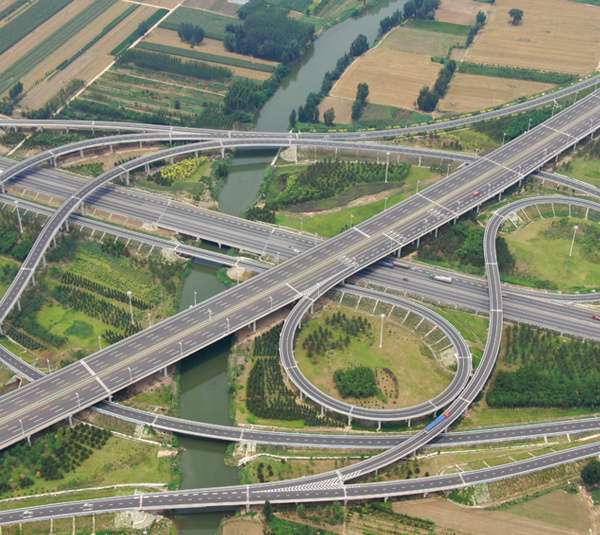Why Choose Prefabricated Steel Truss Bridges for Modern Construction?
May 29,2025

Why Choose Prefabricated Steel Truss Bridges for Modern Construction?
In the landscape of modern construction, the choice of materials and design for infrastructure plays a crucial role in determining the longevity, efficiency, and overall success of a project. One design that has gained significant traction is the **prefabricated steel truss bridge**. This article delves into the myriad benefits of opting for prefabricated steel truss bridges, exploring their construction efficiency, cost-effectiveness, durability, and aesthetic appeal.
Table of Contents
1. Introduction to Prefabricated Steel Truss Bridges
2. Understanding the Components of Steel Truss Bridges
3. Advantages of Prefabrication in Construction
3.1 Time Efficiency
3.2 Cost-Effectiveness
3.3 Enhanced Quality Control
4. Durability and Longevity of Steel Truss Bridges
5. Aesthetic Considerations in Bridge Design
6. Environmental Impacts and Sustainability
7. Case Studies of Successful Prefabricated Steel Truss Bridges
8. Frequently Asked Questions (FAQs)
9. Conclusion
1. Introduction to Prefabricated Steel Truss Bridges
Prefabricated steel truss bridges are engineered structures designed to span distances while providing support predominantly through a network of interconnected triangular units, known as trusses. These bridges are manufactured off-site and assembled on location, which streamlines the construction process and enhances their structural integrity. As infrastructure demands grow globally, these bridges offer a forward-thinking solution that meets the challenges of modern construction.
2. Understanding the Components of Steel Truss Bridges
The design of steel truss bridges comprises several key components that contribute to their strength and efficiency.
- **Trusses**: The primary structural element made of steel, arranged in a triangular formation to distribute loads evenly.
- **Decking**: The surface where vehicles and pedestrians travel, often made from concrete or steel.
- **Support Columns**: Vertical structures that carry loads from the trusses to the ground.
- **Bearings**: Mechanical devices that allow for movement and load distribution, ensuring stability and flexibility.
Understanding these components is crucial for appreciating the advantages of prefabricated steel truss bridges.
3. Advantages of Prefabrication in Construction
Prefabrication offers numerous benefits that make steel truss bridges an ideal choice for modern infrastructure projects.
3.1 Time Efficiency
One of the most significant advantages of prefabricated steel truss bridges is the substantial reduction in construction time. By manufacturing components in a controlled environment, construction crews can minimize delays caused by weather and other on-site variables. Once the components are fabricated, they can be quickly transported to the site and assembled, allowing for faster project completion.
3.2 Cost-Effectiveness
Cost savings are another compelling reason to choose prefabricated steel truss bridges. The efficiency of the manufacturing process reduces labor costs and minimizes wasted materials. Additionally, the speed of assembly reduces the overall project timeline, leading to lower financing costs and quicker return on investment.
3.3 Enhanced Quality Control
Prefabrication allows for stringent quality control measures to be implemented during the manufacturing process. Each component can undergo rigorous testing and inspection, ensuring that they meet safety standards and design specifications. This level of quality assurance translates into a more reliable and durable final product.
4. Durability and Longevity of Steel Truss Bridges
When it comes to infrastructure, durability is paramount. **Steel** is inherently resistant to many environmental factors that can lead to deterioration, such as corrosion and fatigue. Modern coatings and treatments further enhance the longevity of steel truss bridges, making them capable of withstanding harsh weather and heavy loads over extended periods. Studies have shown that prefabricated steel bridges can last 50 years or more with minimal maintenance, making them a sustainable investment for communities.
5. Aesthetic Considerations in Bridge Design
Beyond functionality, the aesthetic appeal of a bridge is essential in urban and rural settings. Prefabricated steel truss bridges offer a sleek and modern appearance that can be customized to fit the surrounding environment. Architects can incorporate various design elements, from color schemes to decorative features, ensuring that the bridge complements its surroundings while serving its purpose effectively.
6. Environmental Impacts and Sustainability
As the construction industry increasingly emphasizes sustainability, prefabricated steel truss bridges stand out as an environmentally conscious choice. The use of steel, which is highly recyclable, reduces the carbon footprint associated with bridge construction. Additionally, the efficient manufacturing process minimizes material waste and energy consumption. Implementing these bridges promotes sustainable practices in infrastructure development.
7. Case Studies of Successful Prefabricated Steel Truss Bridges
Several projects worldwide illustrate the successful implementation of prefabricated steel truss bridges, highlighting their versatility and efficiency.
- **The I-35W Saint Anthony Falls Bridge** in Minneapolis, Minnesota, is a prime example. This bridge utilizes steel trusses and was completed in just over a year, showcasing the speed and efficiency of prefabrication.
- **The Queen Street Bridge** in Toronto, Canada, demonstrates the aesthetic potential of these structures, integrating art and design elements into its steel framework while adhering to strict environmental standards.
These case studies reflect the growing trend toward prefabricated structures in modern infrastructure, reinforcing their benefits and appealing qualities.
8. Frequently Asked Questions (FAQs)
What are prefabricated steel truss bridges?
Prefabricated steel truss bridges are structures manufactured off-site using steel trusses, which are then assembled on location. This method enhances efficiency, durability, and quality control.
What are the main benefits of using prefabricated steel truss bridges?
The primary benefits include time efficiency, cost-effectiveness, enhanced durability, and aesthetic versatility, along with reduced environmental impacts.
How long do prefabricated steel truss bridges last?
With proper maintenance, these bridges can last 50 years or more, making them a sustainable choice for long-term infrastructure needs.
Are prefabricated steel truss bridges environmentally friendly?
Yes, they are considered environmentally friendly due to the recyclability of steel, reduced material waste during production, and energy-efficient construction methods.
Can prefabricated steel truss bridges be customized?
Absolutely. Prefabricated steel truss bridges can be designed and customized to fit specific aesthetic and functional requirements, making them suitable for a variety of environments.
9. Conclusion
In summary, **prefabricated steel truss bridges** represent a modern solution to the challenges of contemporary infrastructure construction. Their advantages—ranging from time efficiency and cost-effectiveness to durability and aesthetic appeal—make them a preferred choice for engineers and project managers alike. As urban and rural areas continue to evolve, the integration of these innovative structures will play a significant role in shaping the future of construction. By choosing prefabricated steel truss bridges, we not only invest in reliable infrastructure but also embrace a sustainable and aesthetically pleasing approach to modern engineering.
Contact Us
E-mail :
183597530@qq.com
WhatsApp:
+86-13810577811
Address:
No. 4 Fengzhi Road, Binhe New District, Baotou Rare Earth High tech Zone, Inner Mongolia Autonomous Region









